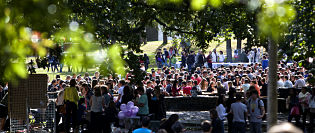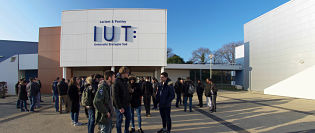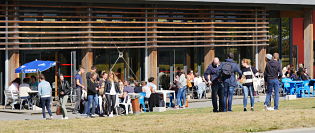Suganya Kuppusamy
Suganya Kuppusamy: a Marie Sklodowska Curie Action (MSCA) Fellow at l'Institut de Recherche Dupuy De Lôme de l’UBS – Lorient
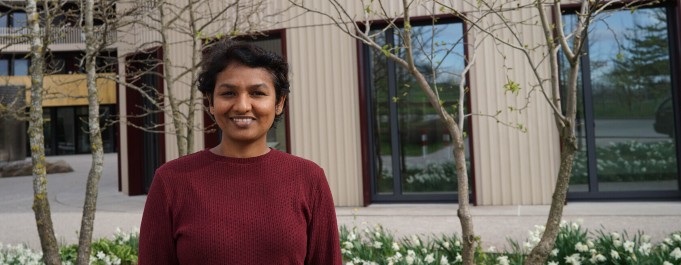
A few words about you!
I am Suganya Kuppusamy, a MSCA postdoctoral researcher at UBS Lorient. Originally from India, I completed my PhD in geotechnical engineering at IISc Bangalore, India, specializing in ground improvement techniques for very soft clays. Following my PHD, I gained practical experience as a geotechnical engineer, serving as a Senior Project Officer at IIT Madras, India.
What is your research project about?
My interest in earth as a construction material grew during a personal project, where I encountered the challenges associated with rammed earth techniques. I gained insight into the socio-technical-economic challenges associated with utilizing local building materials like earth in modern construction, contrasting with contemporary construction materials, despite our region's rich heritage in earth building practices from the past. I decided to shift my research focus to explore earth as a viable construction material, using my extensive experience with the material in foundation engineering.
To pursue this new research direction, I collaborated with Prof. Arnaud Perrot at UBS, Lorient, France and Prof. Guillaume Habert at ETH Zurich, Switzerland. Then together, we developed a research proposal, drafting the MSCA application. Their guidance and support helped me refine my ideas, leading to the successful acceptance of the application.
Currently, my research focuses on developing environmentally friendly, printable/pourable earth mix combinations made from by-product resources and excavation soil wastes, which are carried out at UBS. My project also involves a short research stay at ETH Zurich, where I will be conducting Life Cycle Assessment (LCA) studies to assess the environmental implications of both the earth mixes and the associated construction technology.
Your recommandations and tips for aspiring MSCA postdoc
Here are a few suggestions for future applicants:
- proposals should emphasize cutting-edge research that contributes to economic growth while ensuring environmental benefits in the European context
- interdisciplinary research is also a key. For example, in my application, I highlighted my training in Soil Mechanics, Prof. Arnaud Perrot's expertise in binder chemistry and 3D printing, and Prof. Guillaume Habert's expertise in environmental assessment of building materials,
- diverse expertise is essential for projects, such as knowledge exchange that can lead to promising solutions.
The MSCA proposal process is unique, and Prof. Arnaud Perrot's suggestion to contact 2PE-bretagne was crucial. I advise future applicants to engage with prospective professors early and the host institution from the beginning.
On a personal point of view, relocating to France with my family demanded substantial assistance from the host institution (UBS) for a seamless transition. From visa arrangements to settling into accommodation, their continuous support minimized stress and allowed me to concentrate on my research. Now at ETH Zurich as a visiting researcher, I continue to benefit from the invaluable support of the host institution.
Arnaud Perrot, Professor at the Dupuy de Lôme Research Institute (IRDL) in Lorient, is the supervisor of the RePrintCLAY project of post-doctoral researcher Suganya Kuppusamy.
How did you get to know Suganya Kuppusamy?
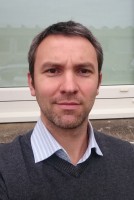 In 2021, Suganya applied for an MSCA scholarship with ETH Zurich and received a very good grade. Zurich colleagues wanted to reapply in 2022 but Switzerland withdrew from the program. Knowing my interest in this type of scholarship, the researchers in Zurich put us in touch.
In 2021, Suganya applied for an MSCA scholarship with ETH Zurich and received a very good grade. Zurich colleagues wanted to reapply in 2022 but Switzerland withdrew from the program. Knowing my interest in this type of scholarship, the researchers in Zurich put us in touch.
How did you work on writing the project?
We co-constructed the subject remotely, since Suganya wrote and submitted her MSCA project when she was working as a geotechnical engineer in an Indian company. For two months, we organized two one-hour meetings per week to work on the project. The European Projects Platform in Brittany (2PE) also participated in these working meetings when we felt it was necessary. In the application, you must succeed in showing that the post-doctoral student comes from one theme, and that the laboratory and the supervisor work on another theme. It is the compilation of the two that will bring about an original subject.
What are the benefits for the supervisor and the laboratory?
The MSCA scholarship makes it possible to attract high-potential profiles with international experience. The candidates have already written applications, they have solid experience in the world of research and for the most part, they have already completed post-doctoral positions. The profiles are not the same as for a traditional post-doctoral offer. In addition, this collaboration allows us to work within a fixed framework with prestigious institutes abroad.
What advice would you give to colleagues who would like to get started?
- Make yourself known to the 2PE: they help connect supervisors and candidates,
- Listen to the advice of the 2PE: they support researchers in writing up European projects, they are used to this type of application
- Move forward step by step: if the 2PE does not approve the candidate, stop the collaboration and try again the following year

